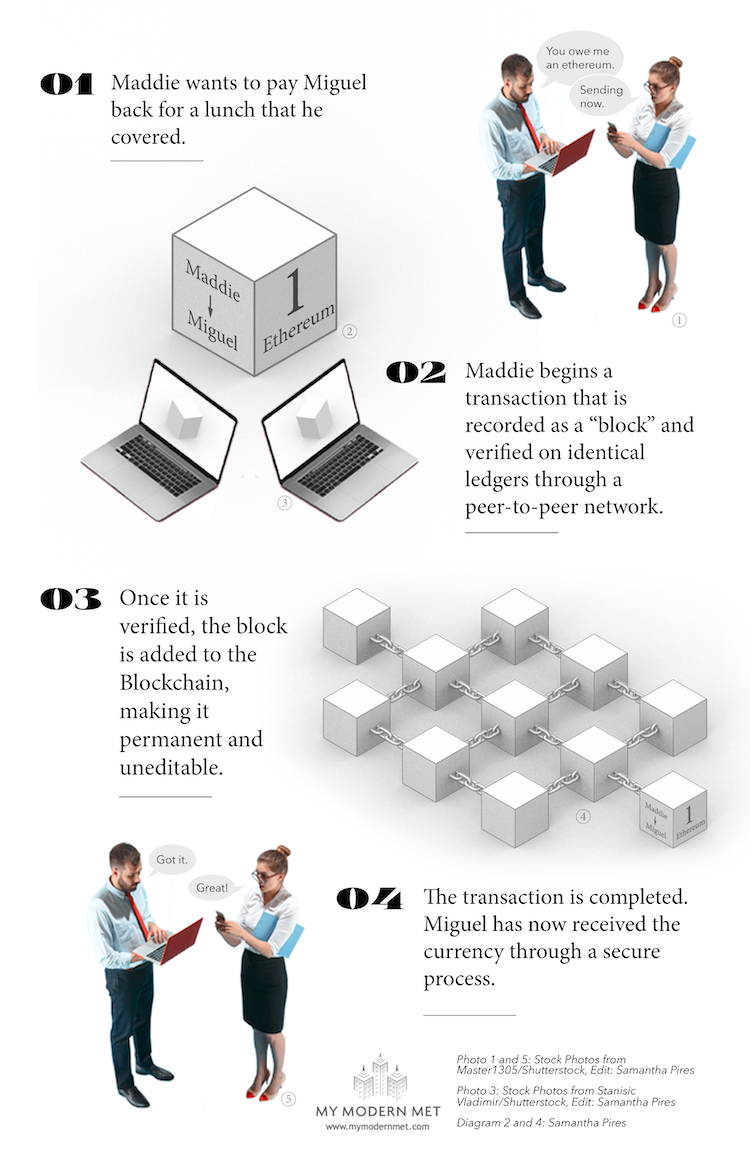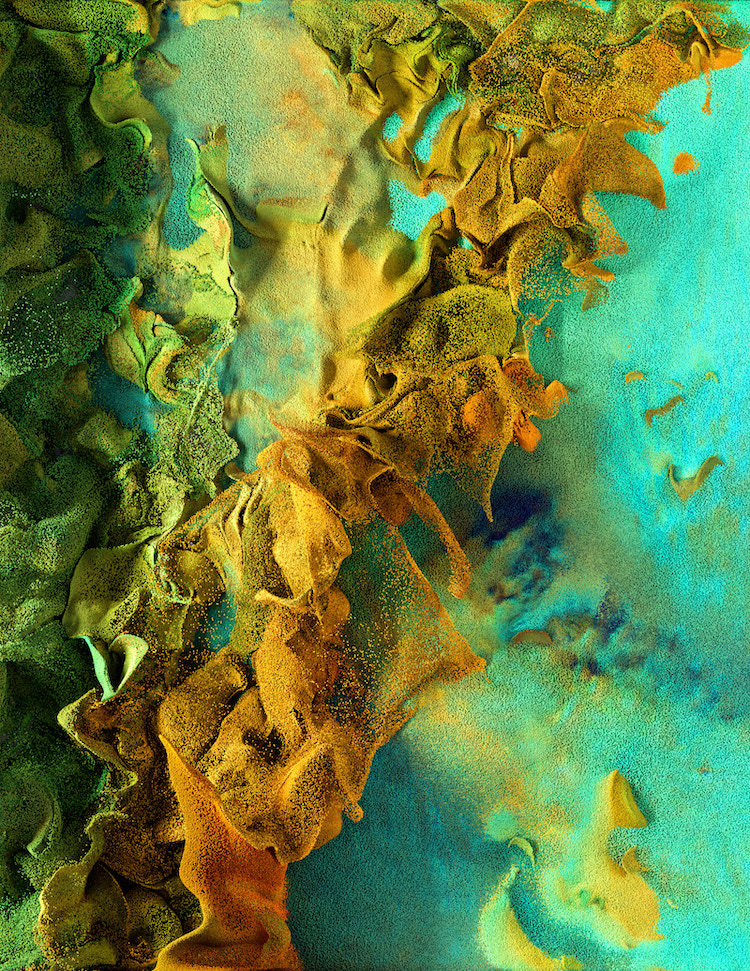Photo: Samantha Pires / My Modern Met
Did you know that Bitcoin is not the only thing being exchanged on Blockchain? Digital artists are finding new ways to sell their work and further establish themselves in their fields. Some believe that Blockchain could be the future of art and that artists should start adapting. This article will provide you a general introduction to Blockchain, cryptocurrencies, and why artists are getting involved.
What is Blockchain?
Blockchain is a platform for exchanging cryptocurrencies like Bitcoin (or the recent meme-turned-money Dogecoin). Before we dive into Blockchain and the emerging practice of buying and selling art digitally, let’s break down what cryptocurrency really is.
Cryptocurrency is an alternate way of paying for goods and services. You can obtain this digital currency by paying “real” money to buy a set number of coins or tokens. But why would anyone pay to simply trade in one form of currency for another? One very important answer to this question is security. When you exchange cryptocurrency, banks and other institutions are cut out of the process. Cryptocurrencies have also become more popular following the success of early investors in Bitcoin—some of whom made millions of dollars by obtaining coins when the value was low. Other supporters simply believe that cryptocurrencies are the future of financial transactions.
How Does Blockchain Work?
The following diagram breaks down how Blockchain works from the scale of a single transaction and how each transaction is verified.

Photo: Samantha Pires / My Modern Met
Why is Art on Blockchain?
So, what does all of this have to do with art? The benefits to exchanging digital art on Blockchain are very similar to those of exchanging cryptocurrency. It is an alternative method—and according to some, a superior one—to owning digital art and authenticating it. Just as the identical ledgers guarantee the security of Bitcoin transactions, digital artists can expect more security and a higher value for work that is traded on Blockchain. Verisart is a Blockchain verification platform for artists.

Artist Refik Anadol is an AI artist whose work can be found on Nifty Gateway (Photo: Machine Hallucinations – Mars – B by Refik Anadol sold on Nifty Gateway)
One digital art marketplace, R.A.R.E., explains that this new medium allows independent artists that do not have huge support from a gallery to expand or launch their art careers: “Our attitude is to find channels to serve these artists while using Blockchain to give them a new mechanism and market to sell their art.”
How Blockchain Makes Crypto Art “Authentic”
Remember that ledger that makes it easy to track transactions? That same practice means that a piece of digital art can be tracked as it exchanges hands and can be traced back to the original artist who created it. Its changing value over time can also be tracked. These factors are used to determine the relative value of physical art pieces, but until now were difficult to track in a digital work that could be easily shared or exchanged online.

Artist Refik Anadol is an AI artist whose work can be found on Nifty Gateway (Photo: Machine Hallucinations – Mars – B by Refik Anadol sold on Nifty Gateway)
How Blockchain Adds Value to Crypto Art
Digital art is more difficult to own than “traditional” art. The issue of shareability again affects the work’s value. Blockchain allows art collectors to own digital art in a completely new way. Non-fungible tokens, or NFTs, are cryptographic tokens that are unique pieces of information. It is not like cryptocurrency in which 1 Bitcoin is equal to any other Bitcoin. Instead, one NFT represents one unique piece of art. NFTs are also used for other things like ownership records, digital items, or domain names. In this way, digital artists can sell their original works and can establish value to their pieces, which can be bought by collectors who now have a record of ownership.
All of these reasons make crypto art an exciting and fairly new idea. Time will tell if Blockchain becomes an important staple in digital artists’ portfolios.
My Modern Met granted permission to feature photos by Refik Anadol.
Related Articles:
Kodak Announces ‘KODAKCoin’ as Cryptocurrency Specifically for Photographers
Imaginative Dreamlike Worlds by Digital Artist Gediminas Pranckevicius
Digital Artist Masterfully Restores Severely Damaged Vintage Photos
